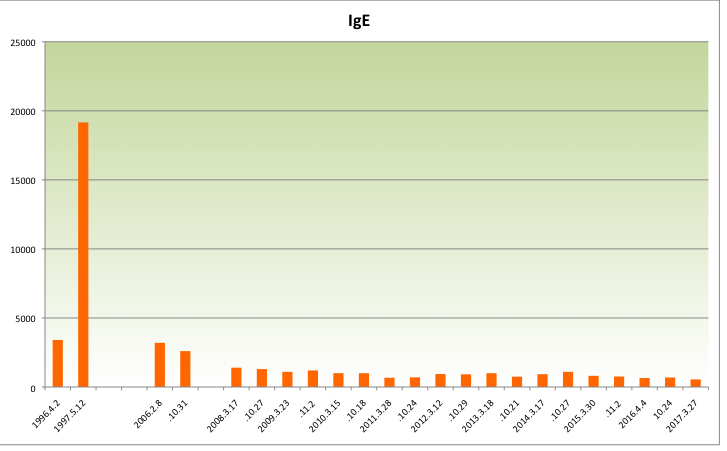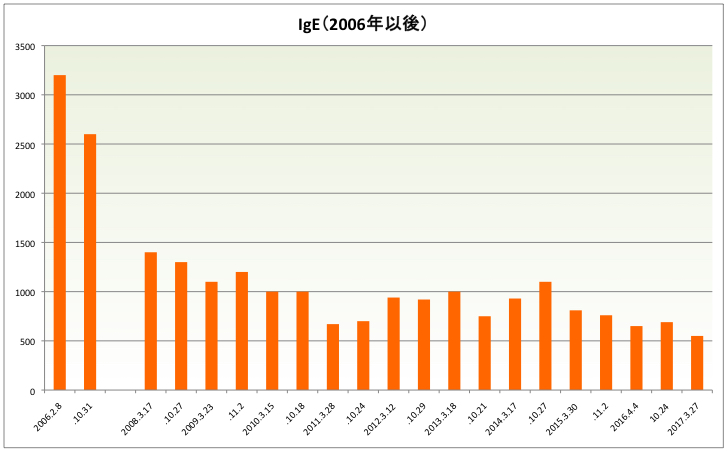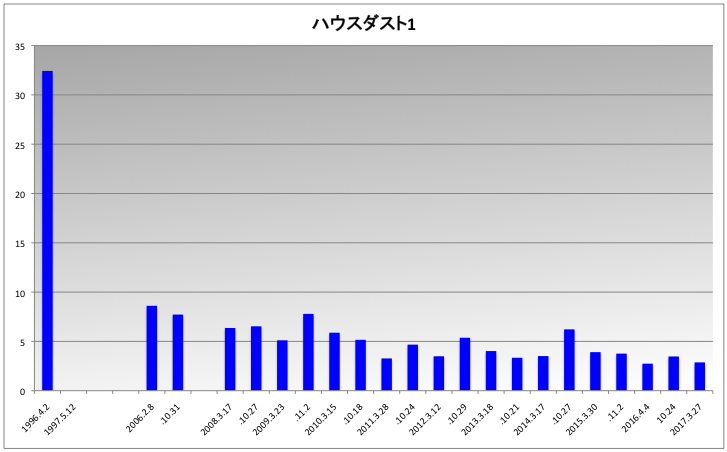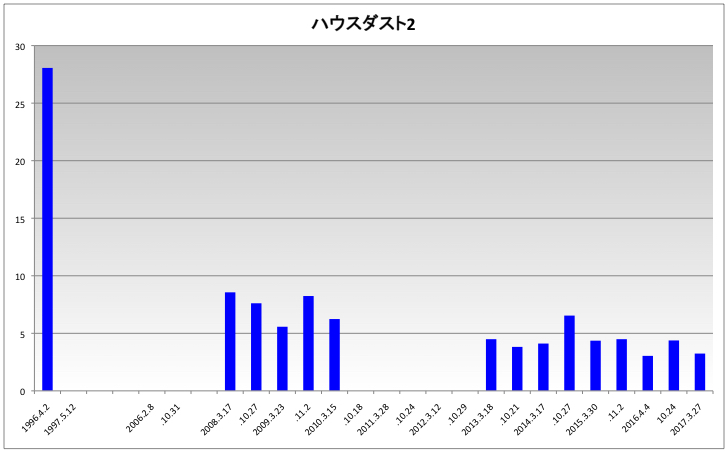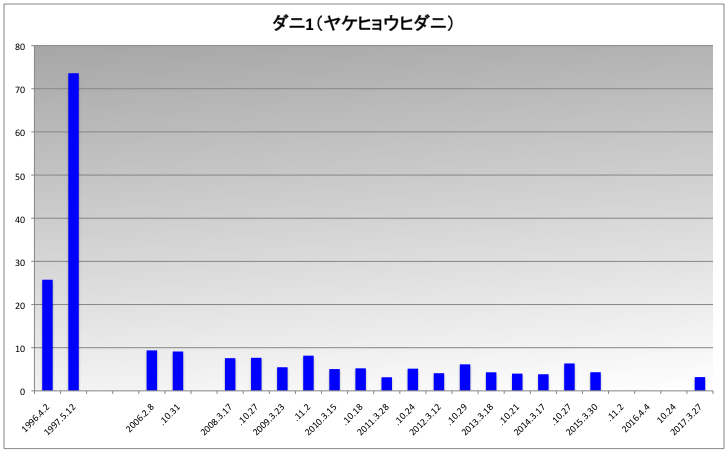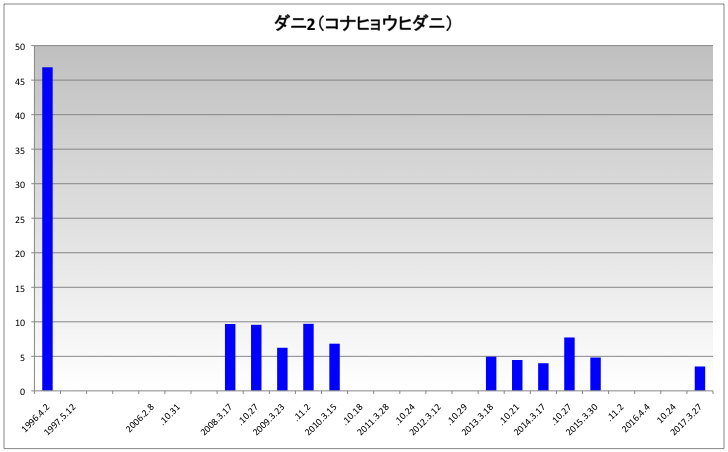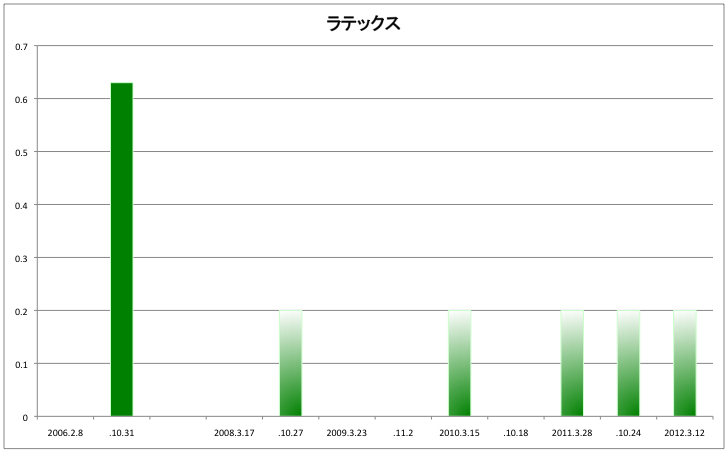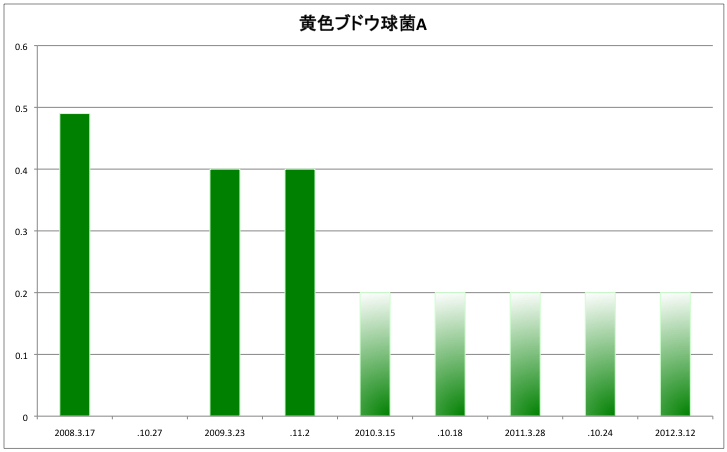But first, I will discuss the importance of serum IgE measurement.
About IgE is the most reliable visible quantitative index of AD.
IgE tests consists of IgE RIST, the total dose of immunogloblin E antibody in the blood, and IgE RAST, measured for each antigen separately.
Of course, the skin eczema is the most major symptom of AD, but it is rather difficult to evaluate quantitatively.
Scratch tests and patch tests are another methods to estimate possible allergens, although they are very complicated to perform so that somewhat troublesome.
Oral challenge tests for food allergy contain much risk, therefore never be done easily.
So, blood tests are easy to take, objectively assessable, the most reliable indications.
Among that, there are eosinophil counts, LDH, as I presented before, and TARC, which is a newer one.
Eosinophil increase in some, but not every patients of severe AD cases.
LDH increases when lots of skin cells are destroyed repeatedly in those inflamed AD skins.
TARC also reflects the raging of AD symptoms.
They are good indications of the general condition of AD.
We also have IgG tests.
IgG is another immunogloblin rising in allergic cases, which can be measured individually by allergens, too.
However, IgG tests are arguable. Just taking the item frequently can make its level higher.
Therefore, they are not taken to be a standard indication, less done by common medical facilities.
So, IgE RAST is the best blood test to evaluate one's responsiveness to each allergen, although it may have some discrepancy with clinical symptoms, because it does not see the whole response process, but just catch the number of IgE antibody in one's blood.
For example, I have been with high CEDAR IgE for long, I never suffered from hay fever through my life.
Though IgE level in the blood should be important to seek one's predisposition to AD.
About other tests, as to me, no patch test, scratch test, or oral challenge test have done.
After the referring in "Working", my eosinophil keeps in normal range, my LDH sometimes exceed the higher border a little, around 250 IU/l.
I am also checking my TARC for these several years.
My TARC always go up in march and go down into normal range in October. (I regularly do my blood work two times a year, in March and October.)
Now I do not feel hard in winter, but it may still a difficult season for my skins.
Only one time, I checked my IgG for individual allergens.
There were some positive results (class 1-3), similar to IgE RAST, although some items were incompatible (Apple : IgE class 2, IgG class 0 ; Onion : IgE class 0, IgG class 1).
I did it abroad, so I can not follow it up to see whether there are some changes or not.
Now, let's talk about the graphs shown left.
They are the developments of my IgE RIST/RAST.
First of all, please see the orange lined graphs at the top. They indicates my IgE RIST, i.e., total amounts of IgE antibodies, mediating my eczematous skin reactions of AD.
The former graph express the whole course since my AD symptoms exacerbated most severely, and the latter graph represents recent progress in a magnified manner for clearer understanding.
As presented in the first graph, my serum total IgE has dramatically improved!
Any doubting person should admit that my AD was once very severe, and nevertheless recovered nicely.
(Note : The peak IgE RAST shown here; 19160 IU/ml, was even exceeded then up to 20120 IU/ml, as described in the previous chapter.)
The orange lines in the second graph shows detailed change after I felt certainly better and got back to my job.(They are enlarged from the 3rd line onward of the first graph.)
Though there are some ups and downs, it goes steadily lower and lower, from 3200IU/ml when I restarted working, to the latest 550 IU/ml.(Surely approaching to the normal range; <=170IU/ml.)
Now, ladies and gentlemen, here is the first exhibition of my IgE RAST results, i.e., objective indications of the reactiveness against individual allergens.
The third to eighth graphs shown left with blue lines are those of HOUSE DUST 1, HOUSE DUST 2, MITE 1 (Dermatophagoides pteronyssinus), MITE 2 (Dermatophagoides farinae), and two kinds of pollens, CEDAR and MUGWORT, respectively.
Each and every item shows significant and constant improvement from initial high levels when my AD was worst.
HOUSE DUSTS and MITES scored class 4 (MITE 2 was even class 5!), but all of them went down to class 3, some of them even reached into class 2.
Only CEDAR had its peak after I started an usual social life again. I don't know why but I guess going out frequently might increased such chances as to be exposed and sensitized to cedar pollens. Its level is also going down steadily after that, though it is relatively high until now.
Some items like MUGWORT turned into negative (class 0) and maintain the status!
Oh, don't you think these results are amazing?
Any true allergy to environmental allergens usually won't decrease throughout one's life.
(Here, some notes are thrown in.)
(Note 1 : IgE RAST is classified into 7 groups due to their measured numerical values, suggesting the intensity of each allergic reactiveness.
1) class 0 (0.34 UA/ml or below)
2) class 1 (0.35- 0.69 UA/ml)
3) class 2 (0.70- 3.49 UA/ml)
4) class 3 (3.50-17.49 UA/ml)
5) class 4 (17.5-49.9 UA/ml)
6) class 5 (50.0-99.9 UA/ml)
7) class 6 (100 UA/ml以上)
Generally, class 0 is equated to negative and class 1 is pseudopositive, but recently many allergists are cautious even to class 1.
The background of these graphs are darkened depending on the degree of the IgE counts to help your understanding.
For example, CEDAR IgE reached to class 3 or 4, so the background is painted deep grey, on the other hand the highest MUGWORT IgE was class 1, so the background is pure white.)
(Note 2 : When these IgE test results were below the limits the testing machine could detect and a precise amounts were not taken, those are expressed as diminishing lines.
A more complicated fact is the testing limits became lowered during these process, from 0.34 to 0.10.
Both are deposited in class 0, but each of them should contain different meaning of itself, so I drew them distinctively. Both lines are fading out to the center point between the threshold and zero.
Please watch the graph of MUGWORT. It is a good example containing both diminishing lines.)
And then, I also checked some fabrics which can be measured by IgE RAST.
Those are the 9th and 10th graph with green lines, indicating COTTON and LATEX, respectively.
AD people are always recommended to wear COTTON clothes, so as not to irritate their sensitive skins. However, I did have an allergy to the COTTON.
It was really a desperate situation, but I had NAET then, so I could desensitize myself for COTTON by NAET. Now I am happy to wear COTTON without any problems.
Maybe in my twenties, I was sensitized by latex while I wore latex gloves daily to perform dermatological surgery to my patients. Every time when I took off those gloves, itchy wheals appeared, which forced me to stop using latex gloves and change to alternative ones.
So I had obvious type 1 allergy to latex, relatively mild, as a form of local hives without any systemic reactions including respiratory or circulatory problems.
Before NAET, my LATEX measured as class 1. After NAET, it was not detected any more(Class 0).
The while, I inadvertently wore latex globes once. It did not cause any wheal.
The next brown lined graphs, the 11th to 14th, are all popular food allergens, SHRIMP, CRAB, APPLE and PEACH.
Whenever peeling shrimps, my hands got red with itch. But eating shrimps caused no symptoms to me. For that reason I have not cooked shrimps long, so I don't know whether shrimps still make my hands red or not, but I can regularly eat cooked shrimps.
Sometimes I experienced slight discomforts when I ate CRABs, APPLEs and PEACHes. After several NAET treatments, now I can taste them deliciously.
All these were not originally so high, except SHRIMP at the beginning, and each and every item has been going down favorably.
I can eat all of those food items satisfactory, although I don't like eating raw apples much.
Generally, when I doubted slight incongruity for some food, its IgE RAST was up into class 1, and when I confirmed repeated incongruity for eating it, the testing was measured as class 2. By these certain correspondence between IgE results and actual clinical symptoms, I really felt the validity of the IgE testing again.
The last 15th and 16th green lined graphs are for infectious agents. The former is STAPHYLOCOCCUS AUREUS, a famous normal bacteria flora that interfere AD skin conditions and the latter is CANDIDA ALBICANS, which is the culprit fungus exacerbating AD through yeast connection.
They should worsened my AD not only by their pathologic behaviors, but also by their allergy.
They also went down from class 1 or 2 into undetectable areas after NAET, and still stable.
Yes, all these my IgE RAST results has definitely improved as I show you here.
They are objective evidences of my significant recovery of AD. And maybe, they should be clear proofs of the good effects of NAET as well, because these revolutionary improvement seems to be quite rare, and these items are all treated by NAET.
(Note: Blood test results are said some possible ranges depending on each machine measured. I must say all these results on and after 2006 (except only the first 0-2 tests) were measured through the same laboratory.)
How will you evaluate such clear evidences?
Generally, infantile food allergies of 5 major allergens, eggs, milk, wheat, rice and soy beans, can be grown out. However, late onset food and environmental allergies, like shellfish, buck wheat, fruits, pollens, dusts and mites and microbes can not be cured, so that a lifelong avoidance is essential against each of them.
But medical consensus shifts as ages goes by.
In pediatrics, instead of the formerly food avoidance until the acquirement of a immunological tolerance, recent fad is giving allergic food forcefully to get an tolerance earlier, which is called the oral immunotherapy.
I think those situations are the reflection of increasing difficult allergy, which cannot be managed beyond avoiding.
For the time being, the oral immunotherapy is just applied to eggs, milk, wheat and peanuts among few professional medical facilities.
I wonder someday it might be widened into other incurable foods and other allergies。
If they can perform it for peanuts, an absolute risky allergen leading to anaphylaxis or death, can't they do the same thing for APPLEs etc.?
However, a long-time follow up periods is necessary for such a immunotherapy. Patients have to keep eating egg every day.
Similarly, sublingual immunotherapy of pollens like CEDAR needs persevering repeated administration of the allergen for 2 to 5 years.
Severe allergens must be avoided permanently. There is no other choice to defend one's life.
But avoidance is a negative measure.
Patients are always full of anxieties.
While avoiding allergens, will their body change better or worse? After a long period of avoidance if they happen to be exposed to the allergens, will the response be severer or milder?
Nobody can not anticipate the patient's future health.
If allergy reactions are not strong, are patients happy then?
No, they often feel unhappy because of the duty of avoidance.
Anybody wants to eats foods he/she prefers and like to go everywhere without limitations. Avoidance compels patients various inconveniences in their daily social lives.
Each and every patients desire to be free from all their risks, discomforts and worries.
These lowered IgE RAST may just reflect the decrease of my IgE RIST.
When a total IgE population went down from 100 to 10, each subpopulation should go down along it.
Or many people would like to take these unusual changes more lightly, such as "It's just a coincidence", "by chance", "a luck" or "only a natural course that might happens"...
However, as for myself suffering from the ailment of AD, the one who once experienced a tremendous fear of those sky-high rising IgE results, nothing can take the place of this relief, seeing those steadily falling results of IgEs every time I tests my blood.
For these 11 years after I had recuperated from the unexpected secluded life with the severest AD, I have been a part-time dermatologist, back to the society working ordinarily again, continuously making efforts of maintaining and empowering my health with the help of the new proceeding Nambudripad's Allergy Elimination Techniques (NAET).
When I wrote the previous chapter "Working", nevertheless my blood data indicated several obvious improvements, it was not obvious yet what is the secret of the success.
Now, I think I can say NAET made the success.
It took long, long time and still going on.
However, to my knowledge, there is no other treatments in this world which can precisely neutralize allergic responses into safe stable levels.
I will go ahead on and on, even if the progress is very slow.
There should be some unknown wonderful future.
Please wait for another reports from me in some day.
See you then!
 IgE RAST TESTS ALSO IMPROVED!
IgE RAST TESTS ALSO IMPROVED!

